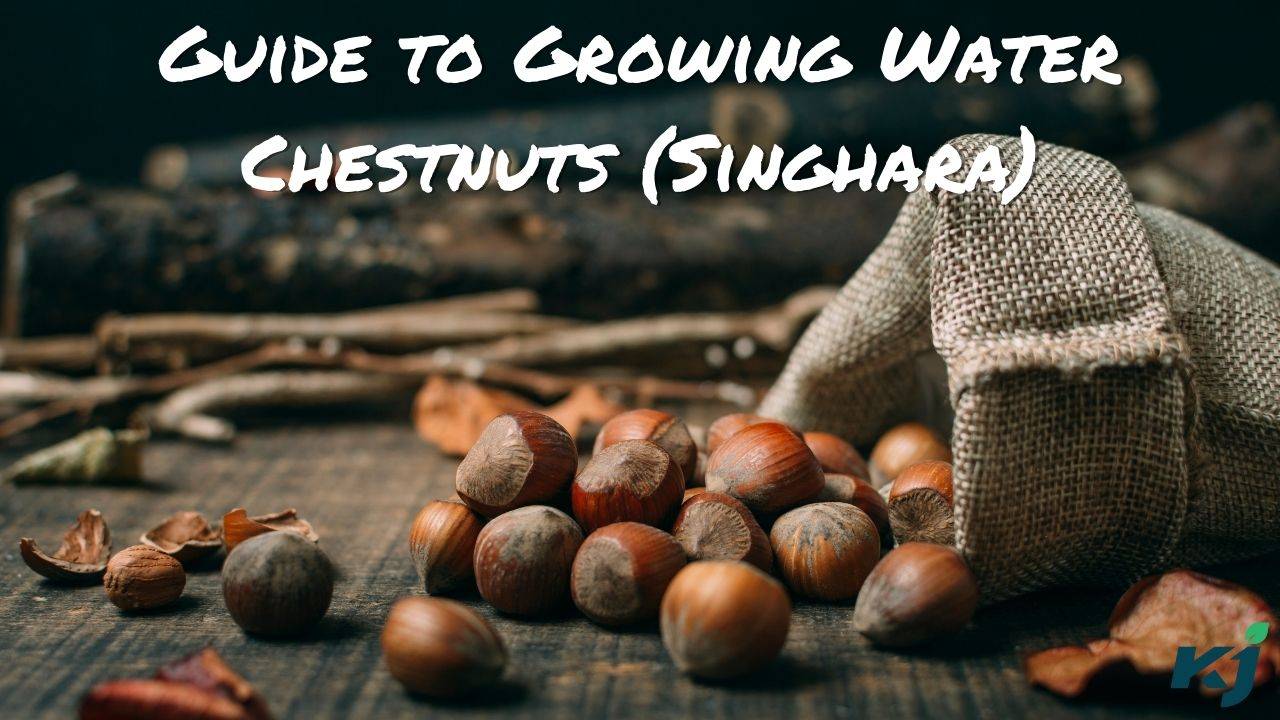
Water chestnuts, commonly known as Singhara in India, are a delightful and nutritious addition to any meal. These aquatic plants produce small, crunchy, and sweet-tasting nuts that are a staple in many Asian dishes. If you've ever wondered how to grow your own water chestnuts, you're in for a treat. In this guide, we'll take you through the step-by-step process of cultivating this delicious aquatic vegetable right in your own backyard.
A Guide to Growing Water Chestnuts (Singhara): Nature's Nutrient-Rich Gem
-
Understanding Water Chestnuts
Before diving into the cultivation process, it's important to understand what water chestnuts are and why they are worth growing. Water chestnuts (Eleocharis dulcis) are not true nuts but rather tubers or corms that grow underwater. They belong to the sedge family and thrive in muddy or marshy areas. These small, round, and crisp nuts have a sweet, mild flavor, making them a popular ingredient in salads, stir-fries, and other culinary creations. They are not only delicious but also packed with essential nutrients like fiber, vitamins, and minerals.
-
Choose the Right Location
The first step in growing water chestnuts is to select an appropriate location. Water chestnuts require a sunny spot with access to plenty of sunlight, ideally around 6-8 hours per day. Additionally, they thrive in shallow water, making them an excellent choice for growing in containers or small ponds. Ensure that the water source is clean and free of pollutants.
-
Prepare a Suitable Container or Pond
Water chestnuts are well-suited for container gardening or growing in small ponds. Here's how to prepare your chosen container:
-
Container Size: Use a wide, shallow container or a pond that is at least 6-12 inches deep. A plastic or wooden container works well for this purpose.
-
Soil Medium: Fill the container with a mixture of rich, loamy soil and organic matter. A 50-50 blend of garden soil and well-rotted compost will provide the necessary nutrients.
-
pH Levels: Water chestnuts thrive in slightly acidic to neutral soil with a pH range of 6.0 to 7.0. You can adjust the pH level as needed using appropriate soil amendments.
-
Planting Water Chestnuts
Once your container or pond is ready, it's time to plant water chestnuts:
-
Tubers Selection: Purchase water chestnut tubers or corms from a reputable source. These tubers resemble small, knobby potatoes and are the part of the plant you will be planting.
-
Planting Depth: Place the tubers in the soil, about 2-3 inches deep, with the sprout end facing upward. Space them 4-6 inches apart.
-
Water Depth: After planting, fill the container or pond with enough water to cover the tubers by about 2-3 inches. Maintain this water level throughout the growing season.
-
Mulch: Cover the soil with a layer of mulch, such as straw or dried leaves, to help retain moisture and suppress weeds.
-
Caring for Water Chestnuts
Water chestnuts are relatively low-maintenance, but they do require some care to thrive:
-
Watering: Ensure that the water level in the container or pond remains consistent throughout the growing season. Water chestnuts are aquatic plants, and they need a constant supply of water.
-
Fertilization: Water chestnuts benefit from regular fertilization. Apply a balanced, slow-release fertilizer to the soil or use aquatic plant fertilizer tabs. Follow the manufacturer's recommendations for dosage and frequency.
-
Weeding: Keep an eye out for weeds, especially in the early stages of growth. Remove any weeds promptly to prevent competition for nutrients.
-
Pest and Disease Control: Water chestnuts are relatively pest and disease-resistant. However, you should monitor for any signs of pests or diseases and take appropriate action if necessary.
-
Thin the Plants: As your water chestnut plants grow, you may need to thin them to allow enough space for tuber development. Thin them to maintain a spacing of 4-6 inches between plants.
-
Harvesting Water Chestnuts
Water chestnuts are typically ready for harvest in about 4-5 months from planting. Here's how to know when they're ready:
-
Check the Plant Tops: When the plant tops begin to turn yellow and die back, it's a sign that the tubers are ready for harvest. This usually occurs in late summer or early autumn.
-
Gently Lift Tubers: To harvest, carefully lift the tubers from the soil. Be gentle to avoid damaging them.
-
Rinse and Store: Rinse the harvested water chestnuts thoroughly to remove any mud or debris. Store them in a cool, dark place for several weeks to cure, which enhances their flavor and texture.
-
Usage: Once cured, water chestnuts can be used fresh in a variety of dishes or preserved by canning or freezing.
Growing water chestnuts (singhara) at home is a rewarding and relatively straightforward process that allows you to enjoy the freshness and nutritional benefits of this delightful aquatic vegetable. Whether you have a small pond or a suitable container, you can successfully cultivate these crunchy, sweet-tasting tubers with a little care and attention. So why not embark on this gardening adventure and savor the delicious results in your culinary creations? From stir-fries to salads, water chestnuts will elevate your dishes to a whole new level of flavor and nutrition. Happy gardening and happy eating!

















